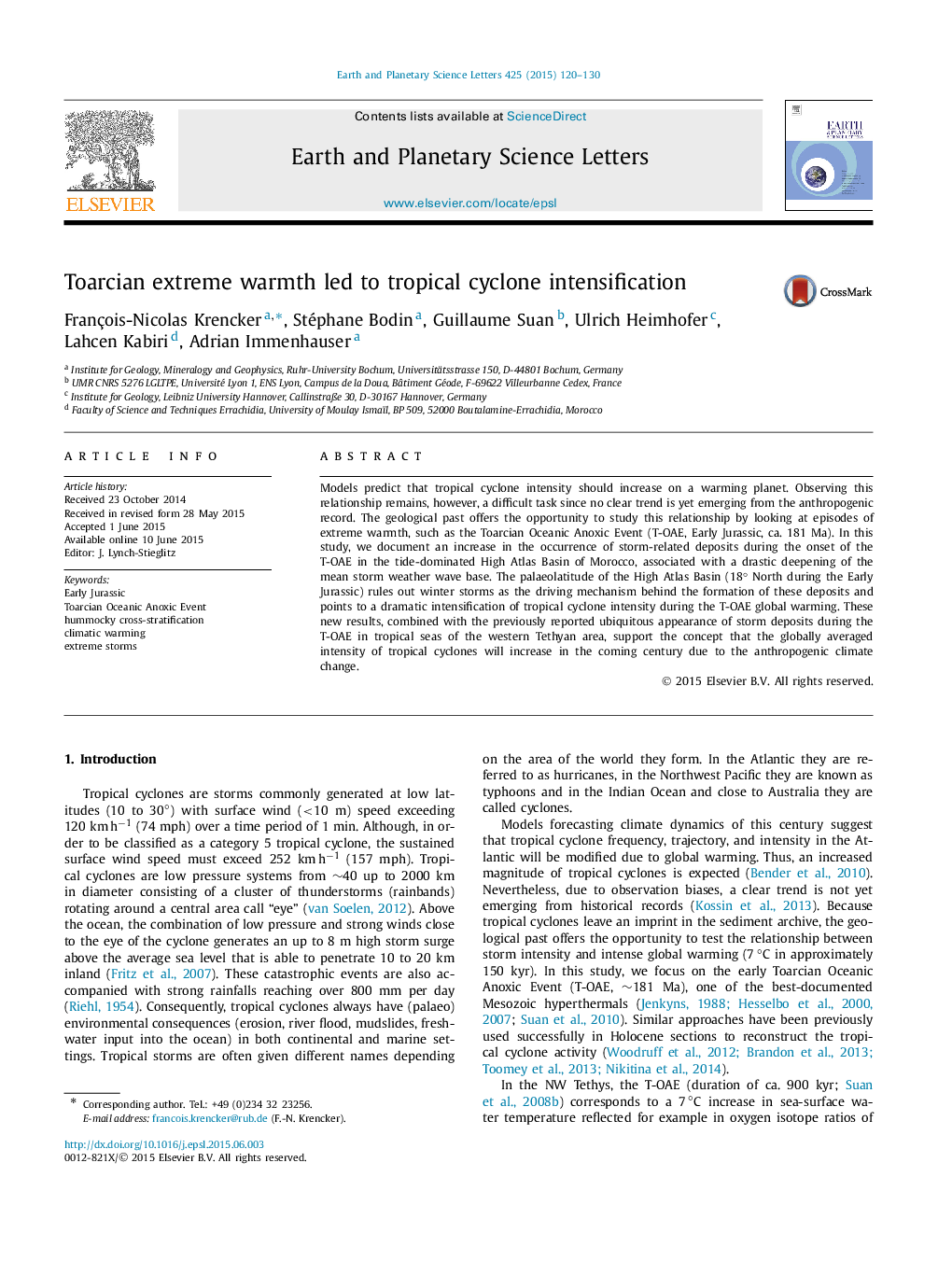| Article ID | Journal | Published Year | Pages | File Type |
|---|---|---|---|---|
| 6428272 | Earth and Planetary Science Letters | 2015 | 11 Pages |
â¢Lower Toarcian sections are characterized by abundant storm deposits.â¢This observation applies for numerous near-shore settings located in the NW Tethys.â¢Storm deposits result from intense tropical cyclones rather than winter storms.â¢Cyclones strengthening caused a basinward expansion of the storm-influenced zone.â¢Intensification of tropical cyclones is coupled with extreme warmth.
Models predict that tropical cyclone intensity should increase on a warming planet. Observing this relationship remains, however, a difficult task since no clear trend is yet emerging from the anthropogenic record. The geological past offers the opportunity to study this relationship by looking at episodes of extreme warmth, such as the Toarcian Oceanic Anoxic Event (T-OAE, Early Jurassic, ca. 181 Ma). In this study, we document an increase in the occurrence of storm-related deposits during the onset of the T-OAE in the tide-dominated High Atlas Basin of Morocco, associated with a drastic deepening of the mean storm weather wave base. The palaeolatitude of the High Atlas Basin (18° North during the Early Jurassic) rules out winter storms as the driving mechanism behind the formation of these deposits and points to a dramatic intensification of tropical cyclone intensity during the T-OAE global warming. These new results, combined with the previously reported ubiquitous appearance of storm deposits during the T-OAE in tropical seas of the western Tethyan area, support the concept that the globally averaged intensity of tropical cyclones will increase in the coming century due to the anthropogenic climate change.
